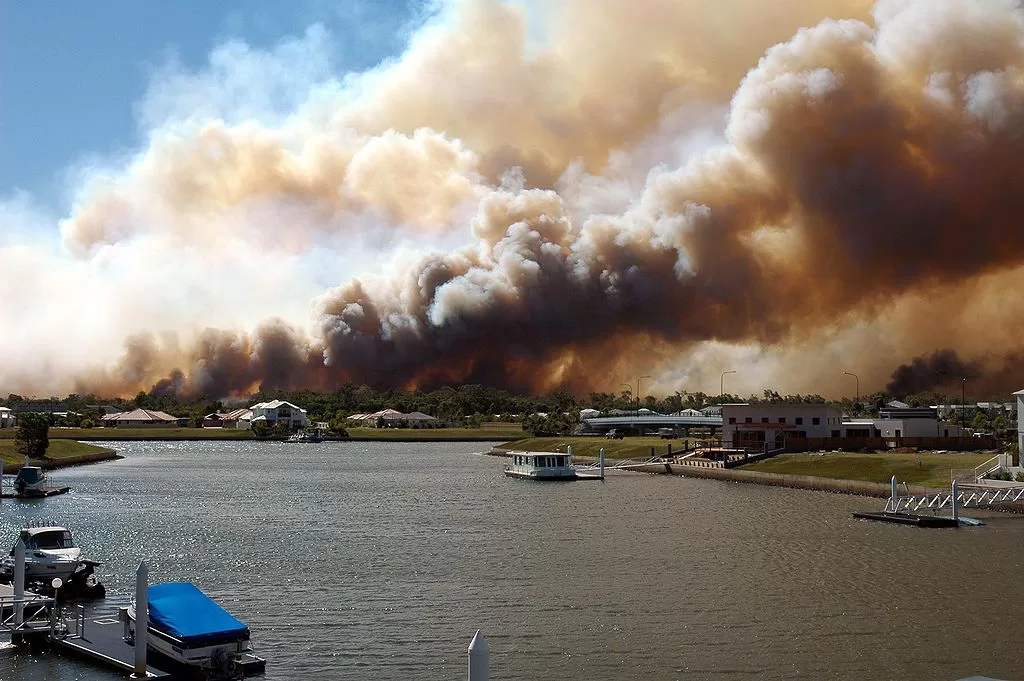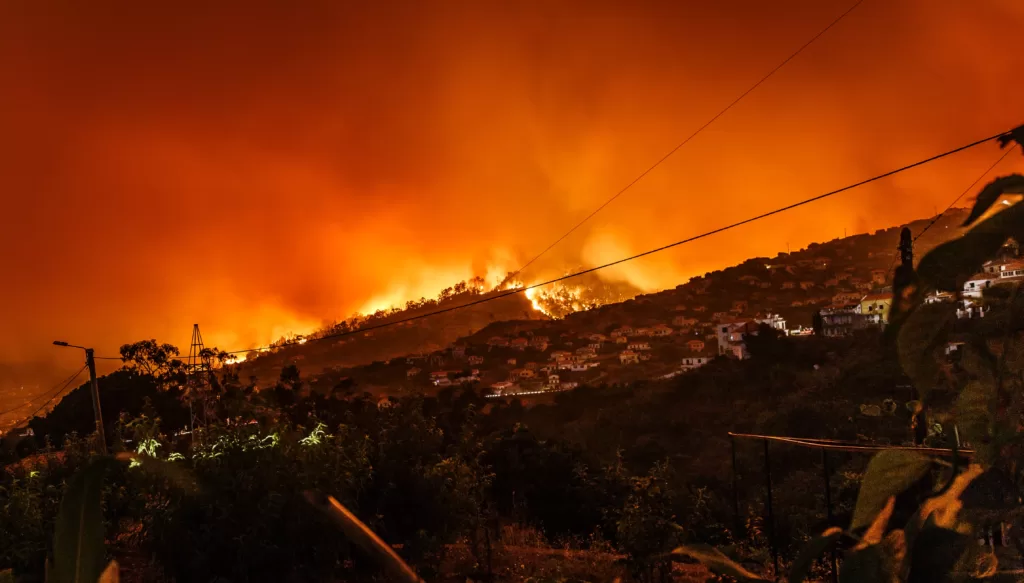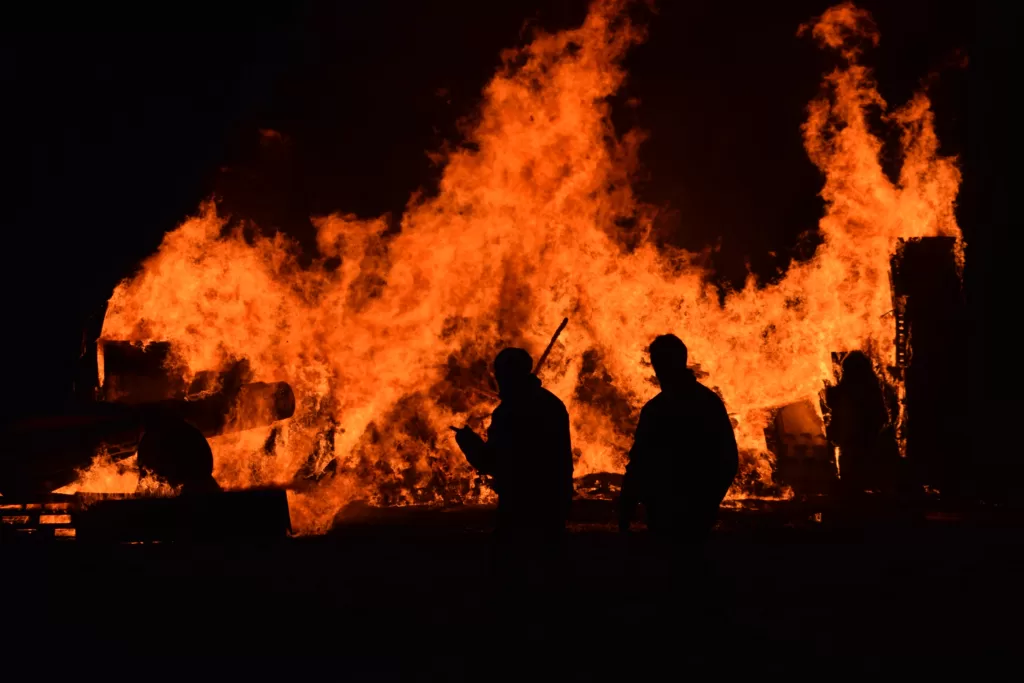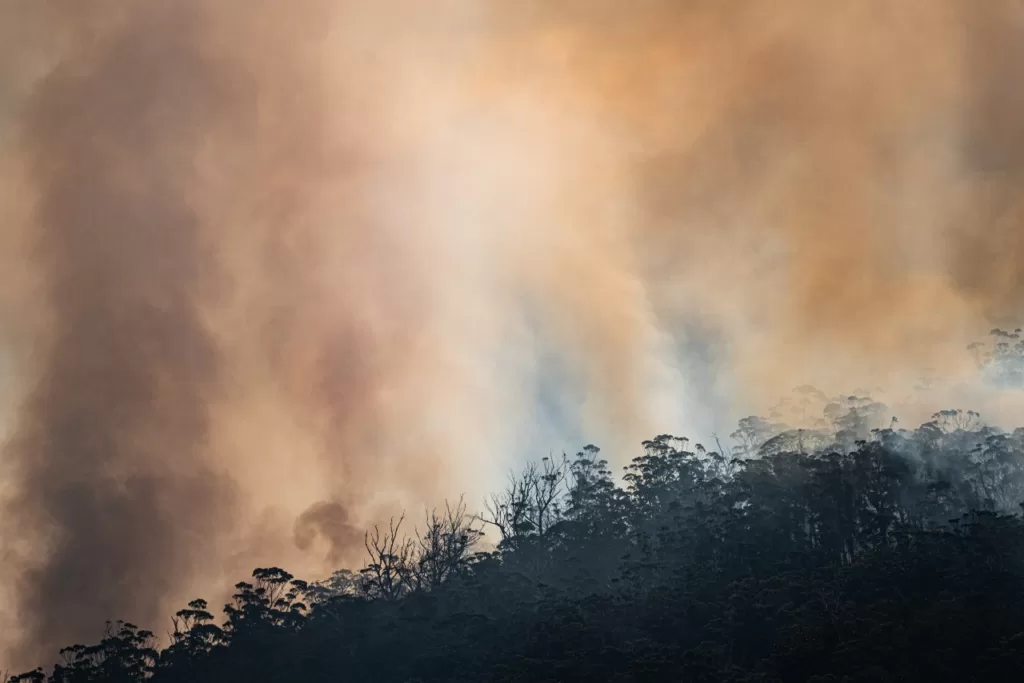Researchers spent five years developing a fire-retardant paint which has become the first to pass a tough Australian standard test that simulates a bushfire.
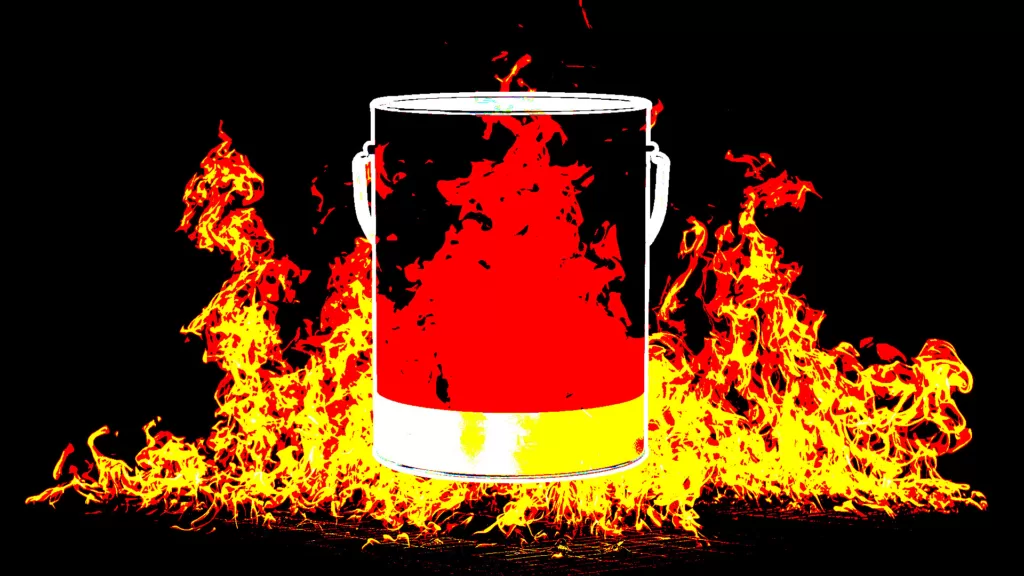 . : Michael Joiner, 360info CCBY4.0
. : Michael Joiner, 360info CCBY4.0
Researchers spent five years developing a fire-retardant paint which has become the first to pass a tough Australian standard test that simulates a bushfire.
A new fire-retardant paint, formulated by engineers at UNSW Sydney, has become the first to pass a stringent Australian standard test that simulates a bushfire attack.
The paint achieved the Bushfire Attack Level (BAL) 40 standard which assesses the bushfire resistance of buildings and construction materials.
Transcript
Quotes attributable to Professor Guan Yeoh, Director of the ARC Training Centre for Fire Retardant Materials and Safety Technologies at UNSW.
“What we have developed here is actually quite a breakthrough because it’s a paint that has satisfied the second highest fire rating, which means that it can protect houses.”
“If you apply the paint, which is an undercoat onto the house, it will transform itself to a very thick, carbon or char layer that actually protects the substrate and deflecting the heat away from the bushfires.”
“It’s basically just like the normal undercoat that you will use for a lot of paints at the moment. But it’s just that it has some so-called secret ingredients that actually grows the layer.”
“That’s basically what it is, yeah. I can’t reveal my secret ingredients to you. You know, I have to do like Colonel Sanders, protecting the KFC recipe.”
“So basically, this is the holder of the sample itself. I’m going to put it in. So this is the untreated wood, that is the treated wood … you can see the difference because of the undercoat being applied onto the surface of the timber.”
“So what happening here is that the surface or sample is subjected to, I would say a temperature now, roughly 800 degrees C. The surface of the wood is turning black, or it’s called charring as well. And eventually it will come to a point where you reach a certain threshold, a certain temperature that you will ignite spontaneously.”
“When you talk about fire, it reach about 1000 °C to 1200 °C, that is how hot the fire is. And basically when it reaches the surface it’s around that temperature.”
“And what you tried to do then is to have a protective layer that can decrease the temperature from 1000 degress C to roughly around 25 to 30 degrees C at the substrate surface.”
“We’re going to carry out the same experiment again. That means that by putting the the treated sample into the core.”
“Okay, so I’m putting the treated sample into the furnace or the oven. And I’m going to start the test by opening the shutter.”
“The same process will occur on the timber as well, but now what happened here is the heat is affecting the paint layer, not on the timber substrate, it’s the paint layer.”
“You can see that now the layer of the paint is transforming into a carbon layer, or the char layer. It is activated around 200 degrees C.”
“So what happened here is that we are trying to ignite the layer with the flame itself, right? But it’s not igniting.”
“Eventually what happened here is that it’s just activating the carbon. It’s trying to grow the carbon to a certain layer to protect the timber substrate.”
And eventually what you will see is that basically the flame will be extinguished all together, not like what you seen with the untreated one where the flames keep burning or whatever.”
So what this equipment try to do is try to ignite the layer itself, but it’s not igniting, you know, it’s just flashes of flame.”
But you can see that now it’s gone. The carbon layer now has rose to you know, you’re talking about 0.5mm right up to almost 20mm.”
It’s grown from a very thin layer to a very thick layer. This is still some residue of the paint there, but you can see that the wood itself is actually not burnt at all.”
Prep your surface again and then you repaint it. It is as straightforward as that.”
We all recognise that the climate is changing. The climate is actually moving very quickly, so to be very extreme. So we just need to get prepared, especially for dry weather.”
We need something to increase the resilience and hope that this will be the start of the development of what people think of using common things like paint, or even other devices, whatever, to actually increase the fire resilience.”
It comes in 4L and 10L and it comes in two colours, white and grey.”
Professor Guan Heng Yeoh is Director of the ARC Training Centre for Fire Retardant Materials and Safety Technologies.
The fire-retardant paint was developed at UNSW in partnership with Flame Security International. It was partially funded via a $3 million Cooperative Research Centres Projects (CRC-P) grant from the Australian government.
Originally published under Creative Commons by 360info™.



